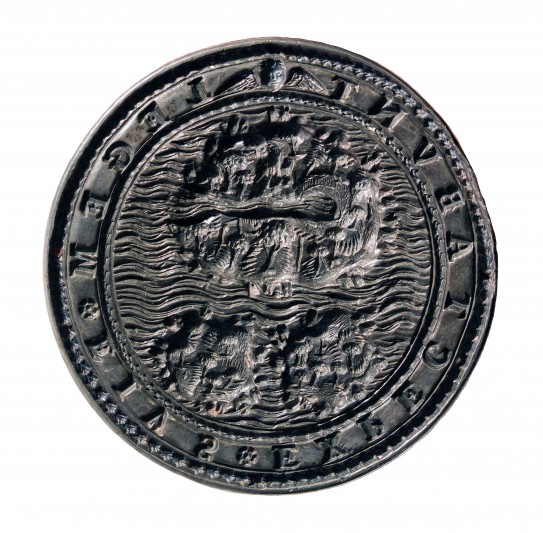The silver seal-die of the Providence Island Company, an English chartered company founded in 1630 to establish a colony on Providence Islands (Nicaragua). The seal was made in London around 1630. The circular face is engraved with a device of three islands in waves with a motto from Isaiah 42.4, LEGEM EIUS INSULAE EXPECTABUNT [the islands shall wait for his law], suggesting that a Christian mission will justify plantation. The citation links to the Stuart `Unite’ coinage, first introduced by James VI and I, in its justification of colonization, nation-building and empire.
The Providence Island Company was one of many such ventures. As the national seal-die collection, the British Museum already holds the seal-die of Sir Walter Raleigh as Governor of Roanoke, Virginia, in the 1590s, as well as seal-dies of trading companies such as the Muscovy Merchants, 1553, and the Royal African Company of 1662. This particular seal-die is particularly interesting and important in illustrating the range of British global contacts in the early 1600s.
The matrix was first in the possession of William Jessop (1603-1675) as chief clerk of the company (his daughter married into the Hulton family), and it descended in the family. It has only recently been re-identified by Richard Linenthal in the light of new research into the Providence Island Company. Its new identification is as yet unpublished, despite new interest in the history of the Company and a book by K. R. Kupperman, Providence Island 1630-1641, The Other Puritan Colony (Cambridge 1993). The matrix will shortly be on public display, with a wax impression, in the Europe, 15th-18th Centuries gallery in the British Museum, and will be catalogued on our on-line database on the BM website.
Thanks to FNL, we will now publish it in its proper historical context, drawing upon the Company’s archive in The National Archives at Kew, and the Hulton papers in Preston, which were also acquired with the help of FNL.

